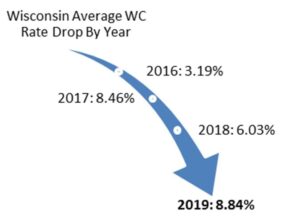How to Seamlessly Switch Your Commercial Insurance Provider

Switching commercial insurance providers can be a strategic move to improve coverage and reduce costs. Whether driven by poor customer service, high premiums, or evolving business needs, understanding the process can ensure a smooth transition without jeopardising your coverage.
Preparing for the Switch
Review Your Current Policy: To determine your insurance needs, first review your current coverage, exclusions, and limitations. This information can be found in your policy schedule or wording. Provide these documents to alternative brokers or suppliers so they can thoroughly review them before offering you new terms. This process helps ensure that they fully understand your existing provisions.
Assess New Needs: Evaluate changes in your business, such as new services, expanded locations, or increased staff, to ensure your new policy covers these aspects.
Timing and Comparing Providers
Timing your switch can significantly impact the transition:
Policy Renewal Dates: Align the switch with the end of your current policy term to avoid potential penalties for exiting early, as well as additional financial costs from needless cover overlaps, that in the event of a claim could result in unnecessary and unwanted complications. If you fail to coincide the expiry and renewal of your policy and end up with a gap in cover, you also risk being exposed without the appropriate protection being in place for the period in between.
Coverage and Cost Comparison: Assess the breadth and depth of coverage each provider offers and research customer reviews. It is worth fully evaluating the benefit of any value adds that your current supplier might be offering. For example, at Plan Insurance Brokers we can assist by providing access to an extensive health and safety document library as well as risk management services. Often overlooked areas include risk management upgrades that may be required by new insurers. These may add to upfront costs but often reduce premiums in the long run and help prevent potential disruption to the smooth running of your business. Hidden or concealed finance costs and ongoing administration fees should also be taken into account when comparing the total cost of the services/product being offered on a like for like basis.
Understanding Cancellation Terms
Before cancelling your business insurance policy, understand the terms to avoid penalties:
Notice Periods and Fees: Be aware of notice periods and any fees for early termination. Check if you’re eligible for a refund on unused premiums. You should also consider the potential impact of changing provider on any rebate you might have agreed should the insurer incur low claim costs during the policy period.
Managing the Transition
Inform Stakeholders: To avoid coverage gaps, arrange for the new policy to commence as your existing cover expires. Notify employees, contractors, and other relevant parties about the change and update all documentation with the new insurance details.
By carefully assessing your needs, comparing providers, and managing the transition effectively, you can ensure continuous coverage and improved insurance solutions tailored to your evolving business requirements.
Find out why 96% of our customers have rated us 4 stars or higher, by reading our reviews on Feefo.




